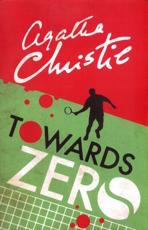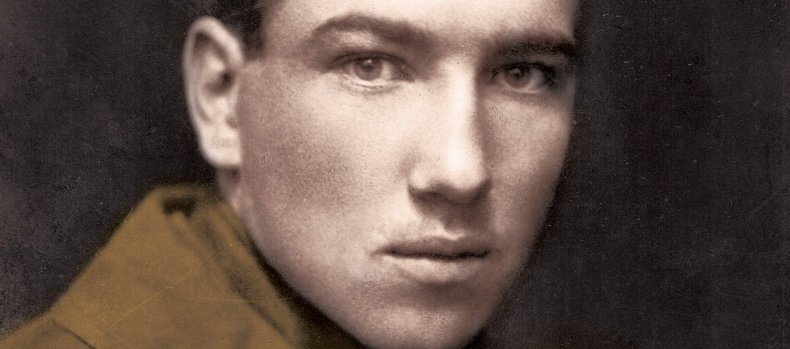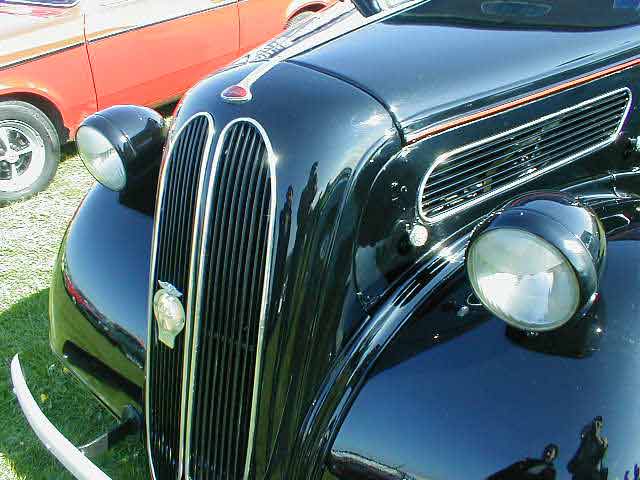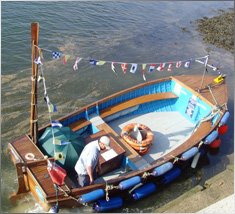
Poirot Score: 63
Towards Zero
☆☆☆
Explanation of the Poirot Score:
A lack of action in the first half of this novel may cause dismay to some readers, and a feeling of boredom in the impatient, wishing for a corpse by the end of the first chapter. One feels bewildered by the seemingly disconnected mundane story lines; Superintendent Battle’s domestic worries, a wittering old solicitor, a failed suicide attempt in a desperate young man, and the shocking behaviour of the younger set who actually want their ex-wives and current wives to be friends. This novel repays those who calmly read on into the second half, when the tapestry of interconnecting threads are so beautifully drawn together, to reveal the picture. The clueing is fair. What is less fairly clued is the motive for the murder, which is hidden until the last 30 pages.
Trivia
Dedication to Robert Graves

Dear Robert,
Since you are kind enough to say you like my stories, I venture to dedicate this book to you. All I ask is that you should sternly restrain your critical faculties [doubtless sharpened by your recent excesses in that line!] when reading it.
This is a story for your pleasure and not a candidate for Mr Graves’ literary pillory!
Your friend,
Agatha Christie.
Robert Graves and Max Mallowan, Christie’s second husband, where both scholarly Oxford classicists. Mallowan then became an archaeologist, Graves a writer. Graves had the Chair of English Literature in Cairo from 1925. Graves dedicated his novel, The Golden Fleece to ‘Agatha and Max, love from Robert 1944’. Perhaps Mrs. Mallowan felt obliged to reciprocate with this barbed dedication. Graves’ The White Goddess (1948) thanks Max Mallowan in the preface.
Robert Graves [1895-1985] fought in World War 1, and was seriously wounded. His father was told he had died and an obituary appeared in The Times. Graves became friends with Siegfried Sassoon when they were both convalescent from their injuries. Graves married Nancy, sister of the artist Ben Nicholson, in 1918. They lived in Dingle Cottage in John Masefield’s garden in Boar’s Hill, Oxford. Graves wrote Goodbye to All That, about his war experiences.
Robert Graves, discussing Christie in a letter (1944):
‘Agatha’s best work is, like P.G. Wodehouse and Noel Coward’s best work, the most characteristic pleasure-writing of this epoch and will appear one day in all decent literary histories. As writing it is not distinguished, but as story it is superb.’ Graves also wrote ‘her English is schoolgirlish, her situations for the most part artificial, and her detail faulty.’
This overweening arrogance may explain Christie’s somewhat teasing dedication to him ‘All I ask is that you should sternly restrain your critical faculties’. No doubt Prof Graves noticed her ‘schoolgirlish’ dedication.
Robert Graves lived near Greenway, the Christie Devon house, between 1940-1944, during the war. The Mallowans also visited Mallorca after the Spanish Civil War, in a neighbouring villa to Robert Graves. So they were clearly close friends.
Film and TV adaptations:
There is one ‘loose’ film-adaptation. Innocent Lies/ Les Pêchés mortels [1995] is a British-French thriller film directed by Patrick Dewolf and starring Stephen Dorff, Gabrielle Anwar, Adrian Dunbar, Joanna Lumley and Keira Knightley. Despite the stellar cast it got bad reviews.
Towards Zero became a ‘Miss Marple’ for the TV series. This might be considered odd since Superintendent Battle mentions Poirot by name in the novel, but Poirot never actually appears. There are many more true Christie Poirots than Marples, so to appease the public’s voracious appetite for the TV Miss Marple, many Christies without either famous sleuth have been adapted with Marple spliced into the scripts. Apart from adding Jane Marple, the TV adaptation stuck closely to the book, and is well done.
A Fine Italian hand
The phrase comes up several times in this book, as a chapter heading and rather improbably thought of by Battle who usually isn’t given to flowery or fanciful turns of phrase. It was originally used for a medieval script, used in early printing and later considered a standard of fine handwriting. {as opposed to printed thick Gothic}.
It later came to mean subtlety, or craftiness: “I sense his fine Italian hand in this matter.”
Horace Walpole in his Anecdotes of painting in England’ [1826-28] in edition published by James Dalaway has a footnote “written in a very fine Italian hand by Nicholas Lanier”. Dalaway graduated from Trinity College, Oxford but failed to get a fellowship there due to some satirical verses he’d written about a senior member of the college.
Burbury
‘I have a Burbury’ said Nevile Strange when about to go out in the rain.
In 1856 Thomas Burbury, then only 21 years old opened a draper’s shop in Basingstoke, Hampshire, after he had been an apprentice. In 1880, Burberry introduced the gabardine, a hardwearing, water-resistant but breathable material, in which the yarn was waterproofed before weaving. This was the era of exploring the ends of the earth.
Roald Amundsen {1911}, the first man to reach the South Pole, and Ernest Shackleton {1914} in his expedition to cross Antarctica both wore Burburys. As did George Mallory for his attempt to climb Mount Everest in 1924.
In 1914, Burberry was commissioned by the War Office to adapt his coat to suit the conditions of contemporary warfare, resulting in the trench coat. brandburberry.files.wordpress.com/2011/09/burberry-office

The Ford
‘The bags were stowed in the Ford…Mary took the wheel..she was a good driver, deft and careful in traffic and with a nice judgement of distance and spaces.’
Ford Anglia

Christie often wrote with enthusiasm about cars and driving. The liberation of owning her own car was tremendous: she adored driving. Her wild young female characters, like Lady Brent or Tuppence Beresford in the 1920s are some of the very first women to ever drive an automobile. By the 1940s more women were driving, and Christie used Mary Aldin’s skill at driving to define her character. Mary is careful, accurate, thoughtful, competent and intelligent: Thomas Royde takes this all in during the seven mile drive from Saltington Station to Saltcreek.
The Ferry Crossing: The Dittisham Ferry to Greenway
The ferry from Gull’s Point to Easterhead Bay, is critical to the murderer’s alibi. Two brothers ferry people across the estuary in their boat, and ‘know everybody in Saltcreek..and most of the people ..from Easterhead Bay.’ They are able to inform the Police that Mr Strange went across at 10.30pm, but they had not brought him home again. They were also able to say that Ted Latimer did not use their ferry on the night of the murder.
The ferry is based on the real ferry across the Dart from the picturesque village of Dittisham to Agatha Christie’s House at Greenway [in the book from Easterhead Bay across to Balmoral Court and Gull’s Point]. It still runs but now costs £2.
From Agatha Christie’s home at Greenway you can look across the Dart Estuary to the village of Dittisham, with its idyllic Fishermen’s Collages, now bijoux holiday homes for the very rich and famous. {see Five Little Pigs Trivia}

Dogs and Agatha Christie
In previous books Christie always likes dogs.
There is a real dog in this book that gives the reader an important clue. ‘Don, a wire-haired terrier of amiable and loving disposition, was looking hurt by the tendency of his friends to keep him firmly at arm’s length.’ The dog has rolled in a rotten fish and his young owner, Diana, aged 13, cannot get the smell off his fur. You get Don’s view of the cleansing ‘That disgusting smell of soap again- just when he had found a really nice perfume such as any other dog would envy. Oh well, it was always the same with humans – they had no decent sense of smell.’ This rotten fish smell gives Mr MacWhirter a clue.
Don is another appearance of Agatha’s much-loved wire-haired terrier, Peter [see Dumb Witness Trivia].
If there is a person described in dog metaphors or similes, they are warm, friendly and loyal. ‘Thomas Royde, a faithful old dog who’s always adored her’.
In this book, however, Miss Amphrey, Sylvia Battle’s headmistress, has an ‘eager face suggestive of a conscientious grey-hound’. However, Miss Amphrey is wrong about her ‘psychological methods’. Battle simply asks ‘What about the evidence, Miss Amphrey?’ Perhaps Agatha Christie didn’t rate the brightness of greyhounds. This is the first negative description of a person linked to a dog metaphor.

‘Dobbin’ see discussion in previous trivia [Five Little Pigs and Body in the Library]
Social Structure of the Country House in 1941:
Lady Tressilian is ‘elderly’ [over 70]
Inside the household, not counting gardeners, she has a staff of at least 7 people:
Mary Aldin, a poor relation, to be her companion and run the household for her
The butler, Hurstall
Her Lady’s maid, Jane Barrett
Two housemaids: Emma and Alice
A kitchen maid
The cook, Mrs Spicer
An interesting social comment from the Butler to the police ‘The family,’ he added, anxious not to lose prestige, ’have not been in the habit of changing into evening dress during the summer months. They frequently go out after dinner – sometimes in the garden, sometimes down to the quay.’ This explains to the Police why the gentlemen were not in evening dress.
Lady Tressilian’s butler seemed more concerned about the household’s standing with the Constabulary, rather than his mistress’ murder. Or perhaps, as an impeccable butler, it was his loyal way of siding with his deceased employer by expressing his distaste and incomprehension about the habits of the ‘young people of today’.


